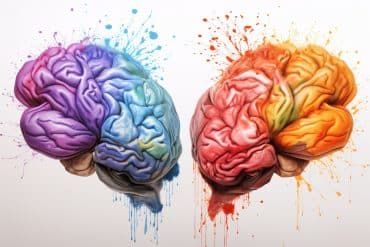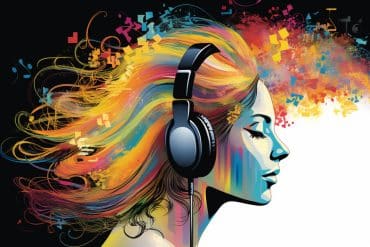Summary: Handwriting, compared to typing, results in more complex brain connectivity patterns, enhancing learning and memory. This study used EEG data from 36 students to compare brain activity while writing by hand and typing.
Handwriting, whether in cursive on a touchscreen or traditional pen and paper, activated extensive brain regions, vital for memory and learning. These findings highlight the importance of balancing traditional handwriting instruction with digital literacy in educational settings.
Key Facts:
- Handwriting activates more complex brain connectivity than typing, beneficial for learning and memory.
- The study used high-density EEGs to measure brain activity, demonstrating the unique cognitive engagement of handwriting.
- The results advocate for maintaining handwriting instruction in schools alongside digital literacy.
Source: Frontiers
As digital devices progressively replace pen and paper, taking notes by hand is becoming increasingly uncommon in schools and universities. Using a keyboard is recommended because it’s often faster than writing by hand. However, the latter has been found to improve spelling accuracy and memory recall.
To find out if the process of forming letters by hand resulted in greater brain connectivity, researchers in Norway now investigated the underlying neural networks involved in both modes of writing.
“We show that when writing by hand, brain connectivity patterns are far more elaborate than when typewriting on a keyboard,” said Prof Audrey van der Meer, a brain researcher at the Norwegian University of Science and Technology and co-author of the study published in Frontiers in Psychology.
“Such widespread brain connectivity is known to be crucial for memory formation and for encoding new information and, therefore, is beneficial for learning.”
The pen is mightier than the (key)board
The researchers collected EEG data from 36 university students who were repeatedly prompted to either write or type a word that appeared on a screen. When writing, they used a digital pen to write in cursive directly on a touchscreen. When typing they used a single finger to press keys on a keyboard.
High-density EEGs, which measure electrical activity in the brain using 256 small sensors sewn in a net and placed over the head, were recorded for five seconds for every prompt.
Connectivity of different brain regions increased when participants wrote by hand, but not when they typed.
“Our findings suggest that visual and movement information obtained through precisely controlled hand movements when using a pen contribute extensively to the brain’s connectivity patterns that promote learning,” van der Meer said.
Movement for memory
Although the participants used digital pens for handwriting, the researchers said that the results are expected to be the same when using a real pen on paper.
“We have shown that the differences in brain activity are related to the careful forming of the letters when writing by hand while making more use of the senses,” van der Meer explained.
Since it is the movement of the fingers carried out when forming letters that promotes brain connectivity, writing in print is also expected to have similar benefits for learning as cursive writing.
On the contrary, the simple movement of hitting a key with the same finger repeatedly is less stimulating for the brain.
“This also explains why children who have learned to write and read on a tablet, can have difficulty differentiating between letters that are mirror images of each other, such as ‘b’ and ‘d’. They literally haven’t felt with their bodies what it feels like to produce those letters,” van der Meer said.
A balancing act
Their findings demonstrate the need to give students the opportunity to use pens, rather than having them type during class, the researchers said. Guidelines to ensure that students receive at least a minimum of handwriting instruction could be an adequate step. For example, cursive writing training has been re-implemented in many US states at the beginning of the year.
At the same time, it is also important to keep up with continuously developing technological advances, they cautioned. This includes awareness of what way of writing offers more advantages under which circumstances.
“There is some evidence that students learn more and remember better when taking handwritten lecture notes, while using a computer with a keyboard may be more practical when writing a long text or essay,” van der Meer concluded.
About this learning, memory, and brain connectivity research news
Author: Deborah Pirchner
Source: Frontiers
Contact: Deborah Pirchner – Frontiers
Image: The image is credited to Neuroscience News
Original Research: The findings will appear in Frontiers in Psychology








